What is big, brown, and has two tusks? A tooth walker, commonly called a walrus.
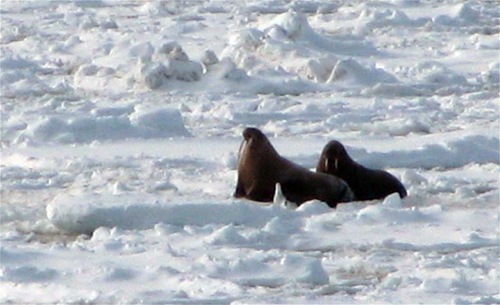
Tonight we were able to see about 80 walruses swimming in the water, creating quite the splash. As the winds are blowing over 40 mph, the walruses stay in the water.
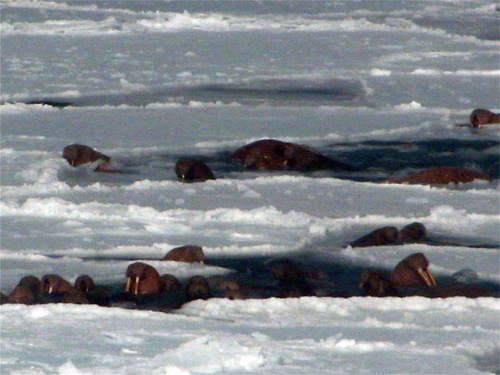
These high winds keep our two walrus scientists grounded, too. They must wait for the winds to calm to do what they came to do... tag walruses. On calmer days, Dr. Chad Jay and Anthony Fischbach scan the skies for walruses from a helicopter. If they spot a group of walruses, they can land the helicopter downwind of the herd to quietly sneak up. If the walruses get a sniff of these two intruders, off the walruses go into the water.
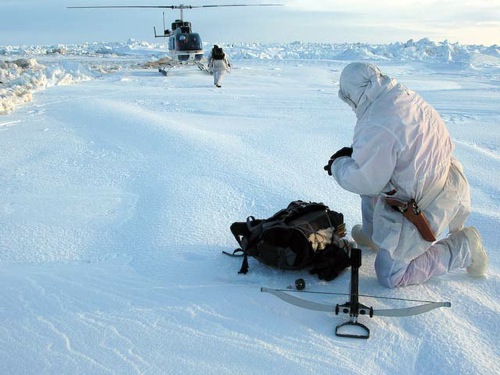
What does it take to be part of this specialized team of researchers? Chad and Tony are part of a small handful of scientists who study walruses in the world. They have a passion for tracking this animal. To do their job well, they need to know what is already known about the animal through research and from hands on learning from the native people who hunt the animal for food. They have studied hard to discover how this animal lives in the Arctic and what are its needs. But there is more to learn. Their mission is to tag 20 walruses with a monitor that will stay implanted into the walruses blubber for about 6 weeks. They design this monitor to collect information and transmit it back to the research team. Watch as Dr. Chad Jay shows us the equipment he uses.
http://
Equipped with a white suit to blend into the snow, two crossbows, one with a satellite radio-tag and the other with a retractable arrow that removes a small amount of skin from the animal, and patience, Chad and Tony set off to find walruses. Once they know that they are close, they lie down in the snow and slowly creep up to the herd. Their goal is to get 10 yards away. At that distance, they can easily fire the crossbows and make their target. Since the radio-tag they designed is heavy for the arrow, any miscalculation in distance will mean a lost chance to tag a walrus and the loss of a monitor. Have they missed? Only once. They lost the radio-tag as the walrus rubbed up against it and snagged it to her skin as she slid into the water. Watch as Dr. Chad Jay shows us the radio-tag up close.
http://
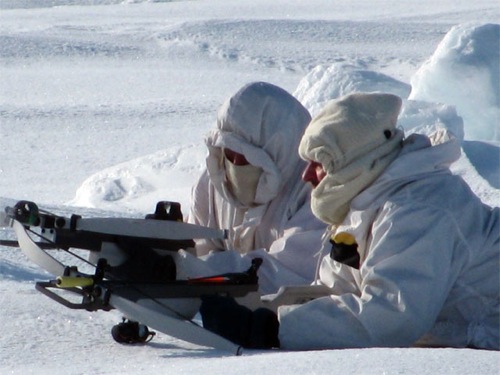
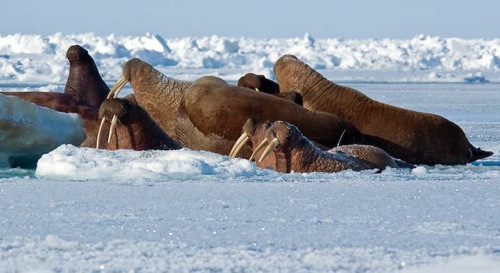
What have they found out? Walruses spend most of their time in the water. They haul out onto to the ice to rest, to conserve heat, to avoid predators, and to give birth. While in the water, they forage, sleep, and travel. From the monitors, the researchers learn that the walrus like to go under the water for seven minutes at a time to the bottom of the continental shelf to feed. They do this over and over. As they travel over the bottom, they use their whiskers as sensors for food. When they find a tasty treat, a clam, they use their powerful tongue to create a vacuum to suck the clam right out of the shell without opening the shell. Clams are a main food supply for the walruses although they do eat polycheates, worms, also. Adults can eat about 80 lbs of food a day.
Walruses make 3 kinds of dives. One dive is a quick dive down to explore the surrounding. They return to the surface almost immediately. While swimming along, walruses dive down for traveling. They can catch the current to travel easily. When involved in foraging, walruses will dive straight down to feed and return to the surface for two minutes and then make another straight dive. They can continue diving like this for 45 minutes, then rest for 10 minutes and repeat the cycle. They continue this diving and feeding pattern for up to 5 days.
From the plug of skin that the researchers extract, they can tell what gender the walrus is, whose its relatives, and whether separate sub populations of walruses exist. DNA analysis helps the researchers further analyze the sample.
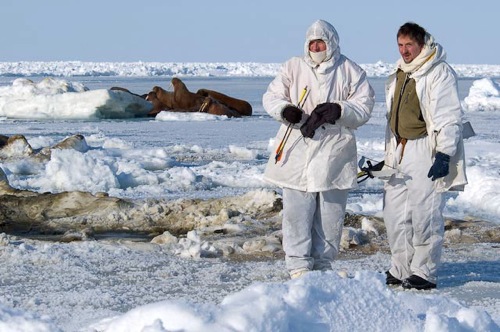
Male walruses, called bulls, can weigh up to 4000 lbs. Their faces are fuller and tusks are wider. The bulls will puff themselves up under their shoulders and make a gong-like song to assert their dominance. The males have bumpy, big, rough skinned shoulders while the females have smooth skin suitable for making boats. They have a less blocky head and have more slender, less-cracked, tusks than males. The female ivory is often sought by ivory carvers.
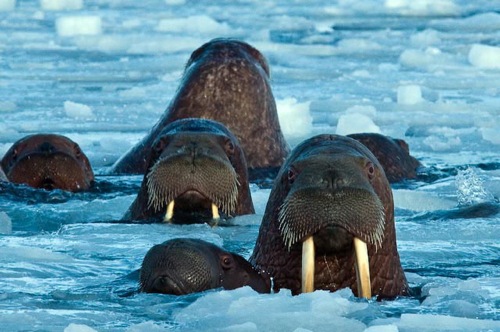
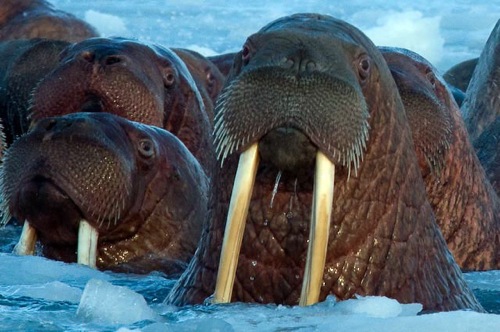
What does a walrus do with a pair of tusks? The tusks are use to haul out on the ice, for social interactions, and for self-defense. They create their breathing holes with their tusks. A walrus breathing hole in the ice can be identified by a small hole in the ice with a pile of ice next to the it.

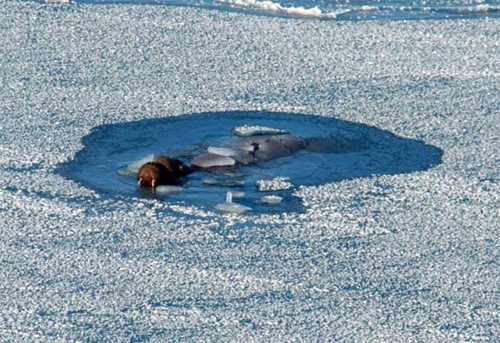
Besides touching each other with their tusks, walruses are very social with each other. While hauled out, the walruses often sleep next together, touching each other gently.


Comments